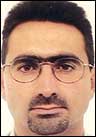The GSM Association, a group composed of more than 700 GSM mobile phone operators around the world, has launched a Near Field Communication (NFC) mobile phone pilot, Pay-Buy-Mobile, in France, Taiwan and Turkey. The group plans to expand the trial to eight more countries this year.
The project is part of the GSM Association’s effort to provide a single approach to contactless payments that can be used by mobile network companies worldwide. By the end of 2008, the pilot will also be underway in Australia, Ireland, Korea, Malaysia, Norway, the Philippines, Singapore and the United States, involving a total of 35 mobile service providers.
In each pilot, local banks and credit card companies are partnering with the mobile service companies and phone manufacturers to provide a sample group of customers with NFC-enabled mobile phones from a variety of manufacturers, to be used for retail payments. The phones with MicroRead NFC chips are provided by Inside Contactless, enabling consumers taking part in the pilot to use their phones to purchase goods and services at participating vendors.
In the second quarter of 2007, the group began seeking NFC-enabled phones with built-in NFC chips, as well as a Universal Integrated Circuit Card (IUCC), commonly known as a SIM card, connected by a single-wire protocol (SWP) connection. The SIM card stores the data required for the transaction, such as the subscriber’s identity, allowing the mobile phone to be used similarly to a credit or debit card.
The first pilot, known locally as Payez Mobile, commenced in the second quarter of 2007 in Caen and Strasbourg, France, using Motorola and Sagem Télécommunications handsets with built in MicroRead NFC chips and SIM cards provided by Gemalto and Oberthur Card Systems. Mobile phone service provider France Telecom is overseeing the pilot, which includes 500 participants and 200 retailers, according to Jean-Philippe Betoin, Inside Contactless’ strategy and device marketing VP.
Retailers are using point-of-sale (POS) devices with NFC readers supplied by Sagem. Local banks BNP Paribas, Crédit Mutuel, Société Générale, Caisse d’Epargne, Crédit Agricole and abanquepostale.fr La Banque Postale are participating with MasterCard and Visa.
In Taipei, Taiwan, telecommunications company Far EasTone is conducting a similar pilot, Beep N Go, which began in November 2007 with 200 consumer participants using a variety of phones equipped with Gemalto SIM cards. Far EasTone expects to move to full deployment by the end of 2008.
In Turkey, mobile provider Turkcell is conducting a pilot with Garanti Bank. E-Kart Electronic Card Systems, in collaboration with Giesecke & Devrient, is providing the SIM card for the mobile phones. In the pilot, 100 Turkcell and Garanti employees have been furnished with NFC-enabled phones they can use at participating markets.
In each pilot, the phones are being utilized in the same way—if the phone is turned on, the participant punches a four-digit password into the keypad at the time of a sales transaction. In France, this process is unnecessary for purchases of less than €20 ($40). If a customer prefers, he or she can use a keypad on the POS terminal to input their password, rather than using the phone keypad. In that case, the mobile phone would not need to be on, or even to have its battery charged, to operate as a payment device. When the sales amount is totaled, the user taps the phone next to the sales terminal, and the approved transaction amount is automatically deducted from the customer’s bank account, similar to a debit card system.
In all three countries, the systems have been operating smoothly. “It’s working quite well,” Betoin says. “There have been no major issues.” Although the pilot’s primary focus is on testing the technology, the next step for all participants, he notes, is to address the business model, with banks and telecommunications providers agreeing on who would assume the role of service manager between the bank and telecom company. That task could be handled by a third party, the bank or the mobile phone operators, or a combination of all three.
Betoin points out that the telecommunications firms have been waiting more than a decade for contactless payments in mobile phones. Opinion polls of consumers, he says, indicate the system would be well received and also provide convenience.
Although Betoin says it would be hard to measure the time reduction of an NFC phone transaction, compared with a debit card transaction, he says just the convenience of using a cell phone to make purchases, rather than a payment card or cash, makes the system worthwhile for customers.
According to Betoin, Inside Contactless is currently the only company manufacturing NFC chips for mobile phones that meet the requirements of the GSMA for this pilot. Those requirements include the single-wire protocol between the chip and the SIM card, and the battery-off mode allowing the system to operate without power from the mobile phone battery.
RELATED ARTICLES Other companies, meanwhile, are testing the use of NFC phones to make purchases and other types of transactions as well. In Spokane, Wash., an NFC pilot not affiliated with, Pay-Buy-Mobile is being launched this month by U.S. Bank using cellular service from AT&T and T-Mobile. An undisclosed number of cardholders are using Nokia 6131 handsets embedded with NFC chips to make payment transactions at about 70 locations in movie theaters and fast-food restaurants. The phones can also be utilized at some vending machines at Gonzaga University.
In a separate pilot, San Francisco’s Bay Area Rapid Transit (BART) mass-transit system, working with Sprint, launched a technology trial enabling subway commuters to use Samsung NFC cell phones to ride trains and purchase food at local Jack in the Box restaurants (see SF’s Transit System Offers Commuters Fast Access to Subways and Sandwiches).


